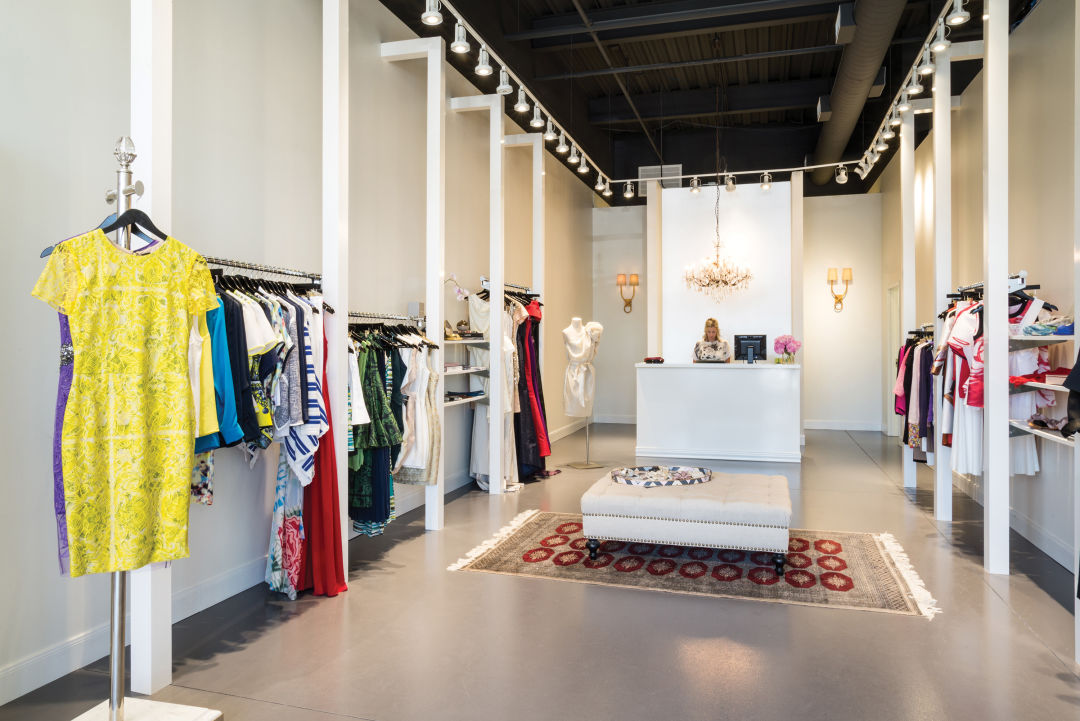Revealing the Secrets Behind Affordable Boutique Fashion
Revealing the Secrets Behind Affordable Boutique Fashion
Blog Article
Exploring the Development and Effect of Clothes on Modern Fashion Trends
The development of clothes has considerably influenced modern fashion fads, combining historical precedents with sophisticated advancements. Legendary numbers like Coco Chanel and Yves Saint Laurent changed the style sector by presenting concepts that prioritize convenience and availability, which proceed to resonate today. Technical strides in locations such as 3D printing and smart fabrics are redefining design opportunities and customer experiences (boutique fashion). Additionally, the expanding emphasis on inclusivity and sustainability is reshaping industry criteria. As we think about these diverse impacts, one must doubt how these elements collectively redefine style's duty in mirroring and shaping modern culture.
Historical Style Influencers
In the tapestry of fashion background, particular figures have left an indelible mark, shaping the fads and designs that define entire periods. Coco Chanel, a cutting edge developer, redefined ladies's fashion by presenting comfortable, elegant clothing that departed from limiting corsets.
Elsa Schiaparelli is another essential figure, renowned for her progressive layouts that integrated surrealist art, collaborating with Salvador Dalí to create whimsical items that challenged standard aesthetics. Her cutting-edge usage of color and bold patterns reverberates in modern fashion. Yves Saint Laurent, meanwhile, democratized high style with prêt-à-porter collections, bringing path designs to the masses and setting a criterion for modern ready-to-wear lines.
These visionaries, to name a few, not only transformed style in their times however also established sustaining trends that reverberate in today's garment industry, giving a structure whereupon modern-day developers remain to build and introduce. Their legacies underscore the significance of imagination and daring in style's ever-evolving narrative.
Technical Improvements in vogue
In the middle of the vibrant landscape of the apparel industry, technical developments stand at the center of technology, reshaping how designers produce and consumers engage with fashion. The integration of 3D printing has actually reinvented design processes, allowing developers to explore intricate frameworks and lasting materials that were formerly inconceivable. This modern technology helps with rapid prototyping, decreasing waste and expediting production times.

Smart fabrics, installing innovation right into fabrics, are additionally changing the industry. Technologies like temperature-regulating and self-cleaning fabrics use boosted functionality and convenience. Wearable modern technology, including features like physical fitness tracking and interaction, adds a new dimension to fashion, combining looks with usefulness.
Cultural Shifts and Design
As technical innovations proceed to improve the fashion market, social shifts are equally significant, redefining style and customer preferences. In current years, the increase of social networks platforms has accelerated the dissemination of global style patterns, enabling diverse cultural impacts to exist together and converge. This digital interconnectivity has actually promoted the rapid exchange of ideas, leading to an extra diverse and inclusive interpretation of style that mirrors the diverse nature of modern culture.
Social understanding and appreciation have actually triggered designers to attract motivation from a broader range of historical and ethnic contexts, incorporating conventional motifs with modern looks. This combination has actually led to fashion that reverberates with a bigger target market, advertising a sense of identification and belonging across various demographics. Furthermore, the increasing need for personalization has actually driven brands to offer personalized options, making it possible for consumers to share individuality while mirroring their cultural heritage.
In you could try these out addition, shifting social worths have influenced fashion, with inclusivity and variety becoming central motifs. The industry has actually started to embrace designs and influencers of various physique, ethnicities, and sex identifications, difficult traditional beauty criteria. This transformation underscores the power of cultural shifts in shaping the future of fashion, as style comes to be a more authentic expression of cumulative and individual identification.
Sustainability and Modern Design
While the fashion sector proceeds to advance, the essential for sustainability has become increasingly urgent, influencing modern-day layout methods. The increase of sluggish fashion, which emphasizes top quality over amount, motivates consumers to invest in timeless items rather than transient fads.
In addition, modern-day style is characterized by its innovation in minimizing waste and advertising circularity. Methods such as zero-waste pattern cutting and 3D knitting are gaining grip, enabling designers to develop garments with very little fabric wastefulness. Furthermore, brands are embracing transparent supply chains, guaranteeing liability and cultivating consumer trust fund. This technique not only go to website minimizes environmental impact yet additionally improves the social responsibility of style houses.

Future Trends in Style

Sustainability will proceed to be a driving force in forming future style patterns. The sector is progressively taking on green materials and honest manufacturing techniques, replying to a growing customer need for accountable techniques. Developments such as bio-fabricated products and closed-loop recycling systems are set to redefine exactly how apparel is created and eaten, reducing environmental influence while preserving design and quality.
Cultural changes, consisting of the rise of inclusivity and diversity, will certainly additionally play a pivotal function. As culture comes to be much more knowledgeable about social concerns, fashion is expected to end up being a system for expression and adjustment. Designers will likely concentrate on producing collections that show a more comprehensive series of identities and experiences, promoting depiction and access.
Final Thought
The advancement of clothing considerably affects contemporary style patterns, where historic impacts combine with modern layouts. Trick numbers like Coco Chanel and Yves Saint Laurent have actually redefined design, while technological innovations such as 3D printing and smart textiles expand creative possibilities. Cultural shifts towards inclusivity and sustainability compel brands to adopt ethical practices and embrace diversity. This recurring advancement emphasizes style's function as a mirror to societal values and technological advancement, recommending a future abundant with development and inclusivity.
The advancement of garments has considerably affected modern-day fashion fads, merging historic precedents with cutting-edge technologies.In the middle of the dynamic landscape of the style market, technical improvements stand at the forefront of innovation, improving how developers create and customers involve with fashion.While the style market continues to progress, the crucial for sustainability has come to be progressively immediate, influencing modern-day design techniques. As sustainability becomes ingrained try this in modern style, it leads the method for a more liable and mindful fashion sector.
The evolution of garments considerably impacts modern fashion patterns, where historic impacts combine with contemporary designs.
Report this page